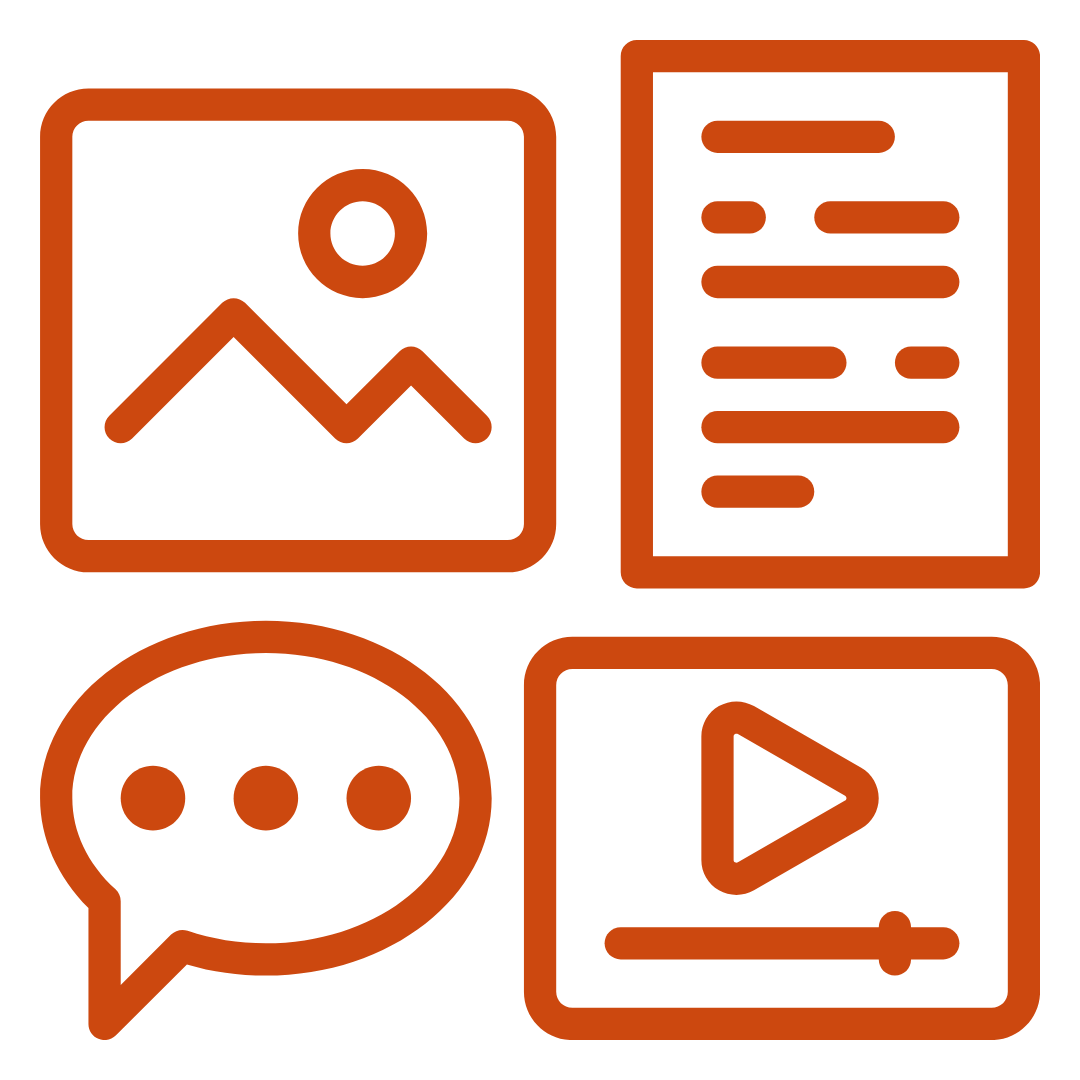 89% of consumers are more likely to make another purchase after a positive customer service experience. (Salesforce Research)
89% of consumers are more likely to make another purchase after a positive customer service experience. (Salesforce Research) Businesses can grow revenues between 4% and 8% above their market when prioritizing better customer experiences. (Bain & Company)
Businesses can grow revenues between 4% and 8% above their market when prioritizing better customer experiences. (Bain & Company) Investing in new customers is between 5 and 25 times more expensive than retaining existing ones. (Invesp)
Investing in new customers is between 5 and 25 times more expensive than retaining existing ones. (Invesp)Customer service representatives, or any employees who deal directly with customers, are on the front lines of the customer experience. Yet, most customer-facing employees have not been properly trained to interact with all customers effectively and respectfully.
Our Accessible Customer Experience training course is specially crafted to help customer-facing employees gain the specific knowledge and awareness they need to deliver an inclusive experience for customers with disabilities. All employees who deal directly with customers, such as CSRs, tech support, ordering, receivables, chat, etc., can benefit from this training.
Empower your team to deliver an exceptional accessible and inclusive customer experience for each customer. This course is self-paced and should take less than two hours to complete.
We offer quantity discounts beginning at 10 licenses. Contact Contact@Accessibility.com for more information.
After successfully completing this course, you and your employee will have a strong understanding of the accessibility barriers people face, how to address or remove them, and how to provide an outstanding customer experience to everyone.
Offering an Accessible Customer Experience supports an organization's commitment to meeting the needs of all customers, directly impacts whether large segments of people can communicate effectively with and take advantage of all the offerings of an organization, and in many cases, it is protected by law.
Knowing how to ask the right questions, listen intently, and maintain professionalism and respect will lead to more positive outcomes for the customer and the organization.
In this course, you will learn how and why it’s so critical for customer-facing employees to have strong accessibility skills and awareness.
The Americans with Disabilities Act (ADA) protects the rights of individuals with disabilities in several spheres of public life, including: employment, public goods and services, state and local government, business and commercial facilities, transportation, and telecommunications.
Understanding the nature of some of the disability types protected by the ADA and some of the most common barriers customers face is a necessary aspect of enabling all customers to access great service.
Why? In the United States, the Centers for Disease Control and Prevention (CDC) estimates that 61 million adults have a disability. This means that roughly one-in-four adults has an impairment or limitation that has a significant impact on their physical or cognitive abilities. For individuals 65 years or older, disability becomes more prevalent at a rate of about 40%.
This course provides overviews of disability statistics and information, as well as detailed information about accommodations, assistive technology, and key customer service tips for specific disability types.
Did you know that digital content, like that on a website or app, can be made in ways that make it more (or less) usable for people with disabilities?
While customer-facing employees are not directly responsible for the accessibility of the organization’s web content, it’s helpful and important to be aware of key concepts. Consider that:
It’s not always easy to know what to say. But, there are some communication and language best practices that will guide customer-facing employees toward being effective and supportive — and never offensive — with customers.
In general:
This course details these core concepts so that customer-facing employees can avoid confusion and communicate effectively while respecting individual identity preferences.
Telecommunications relay service (TRS) enables people with hearing or speech disabilities to communicate by phone through a TRS communications assistant.
There are a number of methods and technologies used to facilitate effective TRS communication, and each form of TRS works a little differently. As a customer-facing employee, having a strong understanding of the most common forms of TRS — TTY (teletypewriter), VRS (video relay service), and STS (speech-to-speech) — can go a long way.
In this course, you can expect to learn about these important communication techniques and technologies, as well as virtual interpreting arrangements. For example, video remote interpreting (VRI) is used to provide sign language interpreting between hearing and deaf or hard-of-hearing (HoH) parties at the same site via videoconferencing instead of on-site interpreting. Being prepared to facilitate various communication needs and preferences can set a customer service team apart.
Great communication is often a pillar of great customer service. For virtual customer service teams, communicating by phone is likely part of their job, if not the primary function. This course will detail how to deliver exceptional customer service with world-class phone etiquette.
Today, many people also prefer online chat features and email communication instead of traditional phone calls. Like all digital content, accessibility needs to be considered for these functions. And, there are some key tips customer service representatives can keep in mind to help make emails and live chats more accessible for more customers.
This course will leave virtual customer service teams better-prepared for the various communication methods of twenty-first century service expectations.

Learn at your speed

About 2 hours

Individual or large teams

Tests along the way


Upon completion

Were Satisfied or Very Satisfied with the course and it's content

Would recommend the course to a co-worker

Found the Content useful, engaging, and easy to follow
See how this engaging video course can help your customer-facing teams provide an outstanding and accessible customer experience to everyone.
[[Animated film illustrating learning points of the course.]]
[[Upbeat gentle background music playing while a human hand sketches illustrations on the screen.]]
[[Narrated]]
Customer service representatives are on the front lines of your customer experience. Playing a critical in how your customers perceive and communicate with your organization.
Yet, all customer services teams have not been trained on how to interact with all customers effectively and respectfully. Imagine how quickly frustration builds, when a customer service rep uses chat or text to communicate with a vision impaired customer or trying to communicate over the phone with a hearing impaired customer.
In this course, you will learn dozens of techniques to interact with all customers more effectively.
The result is delighted customers, that come back again, and a less stressed and more effective customer service team.
The Accessible Customer Service for Virtual Customer Service Teams video training course, is specially crafted to help customer service representatives gain the specific knowledge and awareness they need to deliver inclusive service for customers with disabilities.
In the United States alone, more than 60 million adults have a disability.
Around the world, that number is more than 1 billion.
Accessible customer service supports an organization's commitment to truly meeting the needs of all customers, improving customer satisfaction while improving customer retention, building your brand reputation, and aiding ADA compliance.
Educational and self-paced, this course is designed for all types of customer service teams and all learning styles.
Each topic, from introductions to disability types to assistive technology overviews to effective phone and chat best practices, is supported by video, audio, and text content.
With key takeaways and knowledge checks along the way, team members who complete this course will receive a certificate of completion and a lifetime of practical guidance.
Invest in the future success of yourself and your team with this engaging learning course today.

Select any of the "Enroll Now" links on this page to get started. Ready to move forward? Enroll now.
The Accessible Customer Experience training program is $395 for one license. Multiple license discounts start at 10 licenses with quantity discounts up to 70%. Please contact Andrew Leeah via email at andrew.leeah@accessibility.com for a quote or more information.
Everybody learns in their own way and at their own speed, so the Accessible Customer Experience training is designed to be self-paced. Learners may complete the course in one sitting or save their progress and return later. Typically, learners may expect to complete the course in about two hours.
The Accessible Customer Experience training is designed for all learning styles, so each topic is supported by video, audio, and text content. There are also key takeaways and knowledge checks along the way, helping ensure learners understand this important material.
Absolutely. In fact, all customer-facing employees and managers can benefit from learning how to serve all customers effectively and respectfully.
Generous corporate and volume packages are available. Contact us at andrew.leeah@accessibility.com for details.
Enroll now at the Accessibility.com Learning Center.
Invest in the future success of yourself and your team with Accessible Customer Experience training!
For multiple licenses, contact contact@accessibility.com for a discounted quote.
